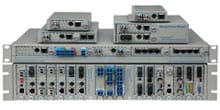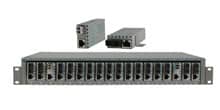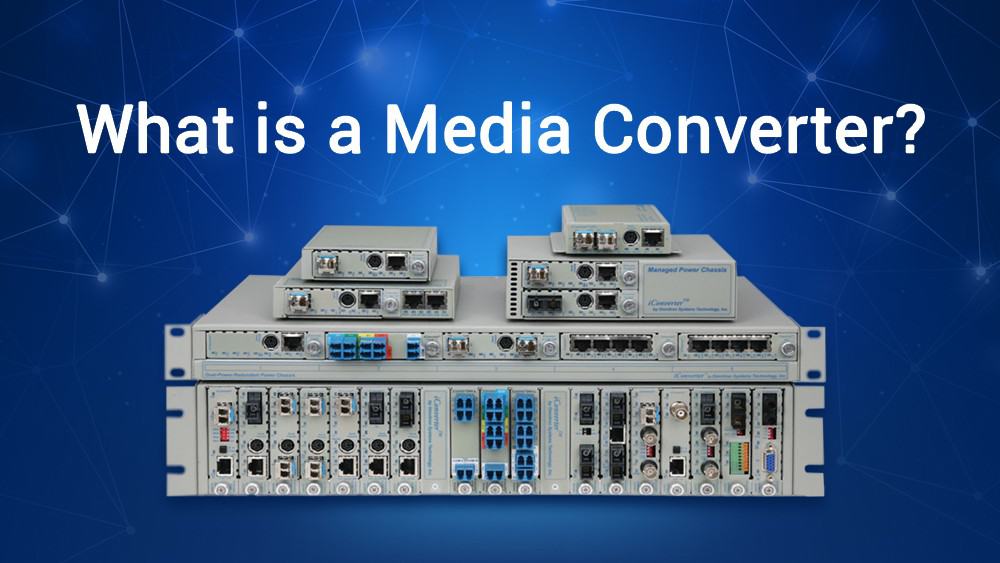- Products
- PoE Media Converters and Switches
- Ethernet & PoE Switches Product Selector
- Multi-Gigabit Ethernet and PoE Switches
- PoE PSE Commercial Switches
- PoE PSE Industrial Fiber Switches
- PoE Industrial Copper Extenders
- PoE Powered Media Converters
- PoE PSE Media Converters
- PoE Extenders & Injectors Product Selector
- Pluggable Transceivers Product Selector
- Product Lines

- iConverter Managed Multi-service Platform
- Copper to Fiber Media Converters
- Ethernet Media Converters
- 10 Gigabit Copper-to-Fiber
- 10/100/1000 Copper to 10 Gigabit Fiber
- 10/100/1000 Copper-to-Fiber with Integrated Management
- 10/100/1000 Industrial Copper-to-Fiber with Integrated Management
- 10/100/1000 Copper-to-Fiber with VLAN
- 10/100/1000 Dual Media Converter with VLAN
- Gigabit Copper-to-Fiber
- 10/100 Copper-to-Fiber with Integrated Management
- 10/100 Industrial Copper-to-Fiber with Integrated Management
- 10/100 Copper-to-Fiber with VLAN
- 10/100 Copper-to-Fiber
- Fast Ethernet Copper-to-Fiber
- Fast Ethernet Redundant Links
- 10Mbps Copper-to-Fiber
- 10Mbps Copper to Coax
- TDM Media Converters
- Serial Media Converters
- Ethernet Media Converters
- Fiber to Fiber Media Converters
- 10 Gigabit Fiber-to-Fiber Converter and Transponder
- 10 Gigabit Industrial Converter and Transponder
- SFP-to-SFP Fiber Converter and Transponder
- SFP-to-SFP Industrial Fiber Converter and Transponder
- Gigabit Fiber to-Fiber with 3 Rs
- 100/1000 Fiber-to-Fiber with 3 Rs
- Gigabit Fiber-to-Fiber
- Fast Ethernet Fiber-to-Fiber with 3 Rs
- Fast Ethernet Fiber-to-Fiber
- OC-3/STM-1 Fiber-to-Fiber
- OC-12/STM-4 Fiber-to-Fiber
- Carrier Ethernet Network Interface Devices
- CE 2.0 - 10G Demarcation NID
- CE 2.0 - 10G Demarcation and Aggregation NID
- CE 2.0 - 10/100/1000 Mult-port NID
- CE 2.0 - 10/100/1000 Mult-port NID with PoE
- CE 2.0 - 10/100/1000 8-Port NID
- SFP NID - Gigabit SFP NID
- microNID - 100/1000 compact NID
- CE 1.0 Service OAM - 10/100/1000 NID
- CE 1.0 Link OAM - 10/100/1000 Copper-to-Fiber NID
- CE 1.0 Link OAM - 10/100 Copper-to-Fiber NID
- CE 1.0 Link OAM - Gigabit Fiber-to-Fiber NID
- CE 1.0 Link OAM - Fast Ethernet Fiber-to-Fiber NID
- CWDM Multiplexers
- T1/E1 Multiplexers
- Ethernet Switch Modules
- Management System
- Chassis Options

- 1-Module Industrial Chassis

- RuggedNet Industrial Switches and Extenders
- Industrial PoE PSE Fiber Switches
- Multi-Gigabit Managed Industrial PoE+/BT Switches
- Multi-Gigabit Unmanaged Industrial PoE+/BT Switches
- 10G Managed 802.3bt PoE Switches
- 10G Unmanaged 802.3bt PoE Switches
- 10G Managed PoE+ Switches
- 10G Unmanaged PoE+ Switches
- 1G Managed PoE+ Switches
- 1G Unmanaged PoE+ Switches
- 1G Unmanaged 802.3bt PoE Switches
- 1G Managed 802.3bt PoE Switches
- Industrial Ethernet Switches
- Industrial PoE Copper Extenders
- Industrial Power Supplies

- OmniConverter Media Converter, Switches and Extenders
- PoE PSE Media Converters
- 10G Multi-Gigabit / Multi-Rate PoE Media Converter
- 10G Multi-Gigabit / Multi-Rate Media Converter
- 10/100 Multi-port PoE+ Media Converter
- 10/100 PoE+ Media Converter
- 10/100/1000 Multi-Port PoE+ Media Converter
- Industrial 10/100/1000 Multi-Port PoE+ Media Converter
- 10/100/1000 PoE+ Media Converter
- 10/100/1000 PoE++ 60W-100W Media Converter
- Industrial 10/100 Multi-port PoE+ Media Converter
- 1U Rack-Mount Shelf
- PoE PSE Compact Switches
- Multi-Gigabit Managed PoE+/BT Switches
- Multi-Gigabit Unmanaged PoE+/BT Switches
- 10G Managed 802.3bt PoE Switches
- 10G Unmanaged 802.3bt PoE Switches
- 10G Managed PoE+ Switches
- 10G Unmanaged PoE+ Switches
- 1G Managed PoE+ Switches
- 1G Unmanaged PoE+ Switches
- 1G Managed 802.3bt PoE Switches
- 1G Unmanaged 802.3bt PoE Switches
- Ethernet Switches
- PoE Copper Extenders
- Single Pair Ethernet Converters
- PoE Injectors

- miConverter Unmanaged Miniature Media Converters
- 10/100/1000 Copper-to-Fiber
- Industrial 10/100/1000 Copper-to-Fiber
- 10/100/1000 Ultra-Compact Copper-to-Fiber
- Gigabit Copper-to-Fiber
- 10/100/1000 Copper-to-Fiber PoE Powered
- 10/100 Copper-to-Fiber
- 10/100 Ultra-Compact Copper-to-Fiber
- 10/100 Copper-to-Fiber PoE Powered
- 18-Module Chassis
- Industrial 10/100 Copper-to-Fiber PoE Powered

- FlexSwitch Compact Switches
- Solutions
- Company
- Support
- How to Buy
What is a Media Converter?

A media converters are designed to convert electrical signals into light waves that are used in fiber optic cabling.
Fiber optic media converters are flexible and cost-effective devices that allow network devices to communicate beyond the distance limitations of conventional copper cables via the use of fiber optic cabling. They support different network protocols, data rates, cabling, and connector types.
Fiber optic media converters allow devices to reach more users and locations as they can transport further distances with fiber optic cables than conventioanal cabling. Fiber optic cables are immune to electrical interference and provide higher security than conventional cabling because they produce no electromagnetic emissions.
Depending on the type of cable, media converter, wavelength and data rate, fiber distances can range from 220 meters to 160 kilometers.
The Advantage Of Media Converters
Media converters have many advantages. Here is a list of the major advantages:
Reduce Network Operating Costs (OPEX)
Media converters save time and money and reduce network operating costs (OPEX) by being able to remotely troubleshoot and configure network equipment that is not easily accessable.
Save Capital Equipment Expenditures (CAPEX)
Media converters save capital equipment expenditures (CAPEX) in two ways:
Enabling interconnection between existing network devices like switches, servers, routers and hubs preserves the investment in legacy equipment.
Enabling WDM technology through wavelength conversion removes the need to install new fiber links.
Copper-to-Fiber Media Converters
Media converters are used to overcome conventional cable limitation distances. Fiber optic media converters are used when two network devices need to transmit data and the distance between them has exceeded the transmission distance of conventional cabling.
Media converters allow two network devices with conventional ports, such as RJ-45 Ethernet to be connected through fiber optic cabling. Copper-to-fiber media converters can be deployed in various networks and applications.
Fiber-to-Fiber Media Converters
Fiber-to-fiber media converters provide connectivity between different types of fiber optic cable, that include Multimode and Single-Mode fiber that can be used for Dual Fiber, Single-Fiber and WDM (Wavelength Division Multiplexing).
Multimode is typically used within buildings or for fiber runs (up to 550 meters), whereas Single-mode fiber optic cables are used to extend longer distances (up to 140 km) and can support higher data rates.
Fiber-to-fiber media converters can be used to convert between any of these types of optical connection, or to extend an existing connection of the same fiber type.
PoE Media Converters
PoE media converters have the same functionality as PoE injectors. PoE media converters are Power Sourcing Equipment (PSE) that provide distance extension with fiber optic cabling to locally power PoE Devices (PDs) like VoIP Phones, Wireless Access Points and Security Cameras.
PoE media converters are used when a network device exceeds 100m (328ft) from the PoE Powered Device (PD).
PoE media converters are used to overcome the distance limitation of conventional cabling similar to Copper to Fiber media converters, with the benefit of acting as Power Sourcing Equipment (PSE).
Standalone Media Converters
A standalone media converter is a compact networking device that will convert Ethernet or other protocols from one cable type to another, such as converting one copper connection to fiber in a point-to-point link.
Standalone media converters are the best choice for areas with limited space and feature simple installation with AC or DC-powered. They can also be used as portable devices that can be powered from a USB power source.
This application example demonstrates how to deploy Omnitron standalone media converters and provide seamless integration of different Ethernet cabling media. Omnitron copper-to-fiber media converters support a variety of cabling and connectors, different network protocols, and data rates from 10Mbps to 10G.
A pair of copper-to-fiber media converters is used to connect two copper switches via fiber. A workstation and a server are also connected to the network using pairs of copper-to-fiber media converters.

Standalone media converters are for use in areas with limited space and feature simple installation with AC or DC-powered.
Chassis-Based Media Converters
Chassis-based media converters are plug-in modules that can be installed in various chassis configurations. Chassis can have multiple power supplies for redundant power protection and a data backplane to allow converters to communicate within the chassis.
Chassis-based media converters provide a fiber uplink and multiple copper ports for network edge deployments.
Media converter chassis save space and simplify installation in high-density network applications.
They add flexibility and scalability, as you can swap out media converters with different protocols or data rates, and add media converters to the chassis as the network continues to grow.
Chassis based installations can also offer remote management capability at central or remote locations with the use of a Network Management Module and management software.
Miniature Media Converters
Miniature media converters are compact portable devices with low power consumption that provide a cost-effective copper-to-fiber connectivity solution. Miniature media converters are perfect devices for field diagnostic applications.
Miniature media converters are available with many fiber types and can be powered with AC, DC or standard USB.
Commercial and Industrial Media Converter
Commercial media converters operate in a temperature-controlled environment from 0°C to 50°C (32°F to 122°F), while industrial media converters operate at extreme temperatures, ranging from -40°C to 75°C (-40°F to 167°F).
Industrial Media Converter
Industrial media converters are deployed in harsh and extreme environments such as factories, building automation, transportation, public utilities and government agencies. They can operate in -40º to 75ºC or -40º to 85ºC temperature environments.
Commercial Media Converters
Commercial temperature media converters are used in indoor and controlled temperature environments, such as schools and universities, office campuses and data centers. Commercial media converters operate between 0°C to 50ºC.
In Conclusion
Media converters enable connecting two network devices over extended distances via fiber optic cabling. If you are still trying to decide which of the following products is well suited for your network, contact Omnitron Systems technicians to get pre-sale support. All Omnitron Systems media converters are designed and manufactured in the USA. They are TAA, BAA and NDAA compliant, and all media converters feature a Lifetime Warranty and free 24/7 technical support. We are available 24/7 to answer your questions. Call us now to get pre-sale support.
At Omnitron, we understand that network design is essential to any successful IT infrastructure. That's why we offer free network design services to our customers. Our experienced network engineers will collaborate with you to develop a comprehensive design that meets your unique needs, budget and time limit. Get free network design









